One of the great things about Wes Anderson‘s Rushmore, for me, was that you had teens and tweeners dealing in a calm, matter-of-act way with a sexual affair between a guy in his early ’50s and a teacher in her mid ’30s, and a story that involved obsession, betrayal, jealousy, big-time finance, erotic hunger, cigarette-smoking and revenge. This trailer for Moonrise Kingdom, Wes’s latest, feels less adult and a little more tweeny. But you can’t go by a trailer.
Wolves Ripped My Flesh

I wasn’t aggressive enough to push my way into the howling papparazzi mob when Liam Neeson arrived for last night’s premiere of The Grey, so here’s a photo from UPI.
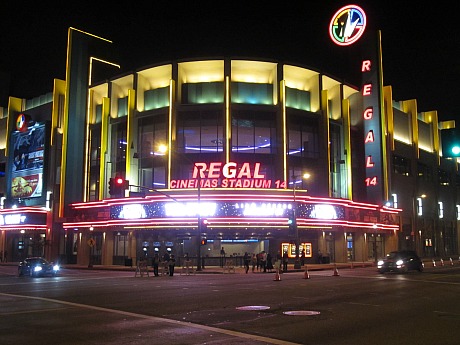
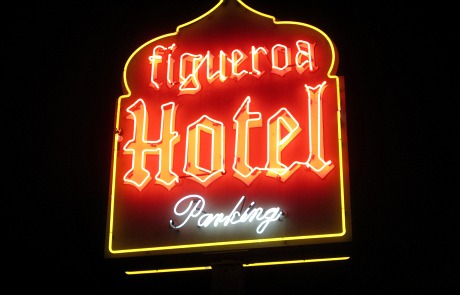
Thai Mahogany
“A Best Picture Oscar is a kind of significant statue, a stamp, the chiselling of a thought, a moment in time carved on a Thai mahogany bedpost that will be looked at and contemplated for decades to come.” — posted on 2.5.11.
I’m obviously not posting anything new here, but for all the loathing that is thrown each year at Academy voters and Oscar tradition tendencies, you can’t really say the same thing about most of the other awards. You sure as shit can’t say this about the Golden Globes, although the show itself (happening this Sunday) is arguably just as entertaining and certainly more perverse than the Oscar telecast.
Which is why, for me, it’s infuriating to contemplate the currently-most-likely winner of the Best Picture Oscar.
Fresh Margaret Booking
L.A. Weekly critic Karina Longworth has announced that Cinefamily (611 No,. Fairfax, just south of Beverly) has booked Kenneth Lonergan‘s worth-seeing but really-hard-to-see Margaret for a one-week run starting on 1.27. Let no one doubt that Hollywood Elsewhere is just as much of a friend of Margaret as anyone else. This movie can best be appreciated if seen with a hip responsive crowd.

Lonergan, a reclusive, highly sensitive man who for the most part has been too much of an Ivory Tower resident to go out and talk to people who admire his film, has spoken to In Contention‘s Kris Tapley.
Karger Throws In Horse Towel
Last night Entertainment Weekly‘s Dave Karger admitted that the string has run out on War Horse. He didn’t say that Steven Spielberg‘s World War I cornball-and-treacle drama was Oscar toast — that would have been too declarative. But his 1.11 piece is titled “War Horse: Are Its Oscar Hopes Fading?” And in the world of Karger-speak you know what that means.

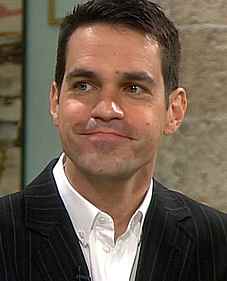
The gist of the article was basically “wait…whoa…what happened?”
It’s one thing when a Spielberg-hater like myself says War Horse‘s Oscar hopes are all but dashed, or when measured, dispassionate pundits like TheWrap‘s Steve Pond or Indiewire‘s Anne Thompson come to the same conclusion. But you know the game is really over when “Safe Dave” — perhaps the leading divining rod of conventional emotional-default thinking among award-season pundits — joins in.
“When I saw War Horse in November, it seemed to me a great bet for Oscar nominations in at least six categories, including picture, director, adapted screenplay, cinematography, art direction, and editing,” Karger writes. “Some of my respected Oscar-prognosticator colleagues even began predicting it would win Best Picture after its strong Christmas debut in limited release. But with Oscar-nomination ballots due this Friday, I’m wondering what happened.
“Without any real standout performances, is the film not connecting with actors? With its wartime setting and sweeping visuals, did it strike people in the industry as too blatant an awards contender?”
Uhm…I think you might be on to something, Dave, with the “too blatant” thing.
I think on some level I still blame Karger for his relentless predictions that The King’s Speech would beat The Social Network last year. I know that Academy members and the DGA in particular were sold on Tom Hooper‘s film for their own reasons, but Karger and his ilk pushed the bandwagon along, and you’ll never convince me that they didn’t nudge a lot of fence-sitters into the King’s Speech boat. They provided some of the wind that inflated its sails.
Which is why I wrote the following last January when the Academy nominations were announced during the 2011 Sundance Film Festival:
“I need to accept and deal wiith what’s happened but…but…wow, I don’t feel so good. I like and admire The King’s Speech — it’s a very stirring and well-made film — but at the same time I feel like Milan Kundera did when the Soviet tanks rumbled into Prague. And standing next to the turret on the tank at the head of formation are Dave Karger, Anne Thompson, Peter Howell and their allies, all wearing Soviet military uniforms and beaver hats.”
Shut Up Doc
Why did LCD Soundsystem frontman James Murphy decide to disband “one of the most celebrated and influential bands of its generation at the peak of its popularity”? I’ve never understood this kind of thing. Break up a band to start another, possibly better one…fine. But why commit ritual seppuku in front of thousands of worshipping fans? You can’t just “quit.” You have to soldier on.
I’m seeing this Sundance 2012 doc for the music, and because the trailer tells me that Reed Morano‘s cinematography is mesmerizing. But God…Murphy looks like a wreck, like an Irish bartender from Bushwick who’s been burning the candle at both ends.
What lasting eternal good was achieved by The Band breaking up when they did? Okay, Martin Scorsese got a good concert doc out of this (i.e., The Last Waltz) but who gets profound pleasure out of saying “we’re done”?
The press notes say that LCD’s decision to terminate and throw a final concert on 4.2.11 at Madison Square Garden “ensured that the band would go out on top with the biggest and most ambitious concert of its career. The instantly sold out, near four-hour extravaganza did just that, moving the thousands in attendance to tears of joy and grief, with New York magazine calling the event ‘a marvel of pure craft” and Time magazine lamenting “we may never dance again.”
Shut Up was directed by Dylan Southern and Will Lovelace.
Good Stuff Never Wanes
“I recently watched There’s Something About Mary, and I found that the shock of that movie’s laughs had worn off — they’d stopped being funny. This only clarified a suspicion I’ve held for years. While ordinary comedies lose their appeal once you know the laughs are coming, the truly great ones only get funnier. It’s almost like I can make myself laugh by remembering the joke that’s coming, then laugh again when the joke actually plays out onscreen, and finally laugh a third time out of relief that it played as well as I’d remembered.” — written over two years ago by critic James Frazier.
Trepidation
I’m sorry but since that West Side Story overture screwup I’ve come to regard MGM Home Video as a Mrs. Grace L. Ferguson & Storm Door video distributor. They’ve shown they don’t know much about older films, so what will their next screwup be? Will their Spellbound Bluray include the red barrel flash when Leo. G. Carroll shoots himself? Will their Annie Hall Bluray have the correct subtitles in that Alvy-and-Annie flirtation scene?
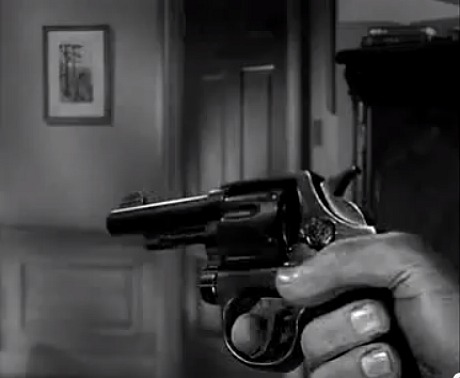
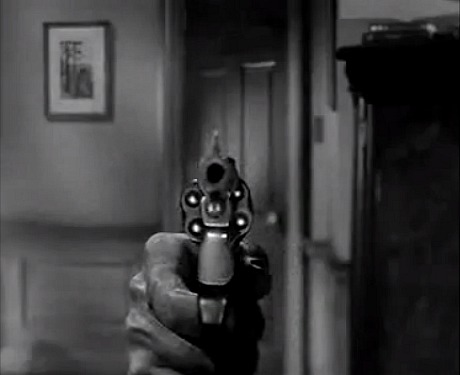

Made America Great
The Hostess corporation has been making crappy, bad-for-you snack food since 1930, and after 81 years they’re going under? I’m ashamed to admit that I’ve been eating those rotgut chocolate cupcakes (my favorite are the kind with the chocolate icing on top of the vanilla-biege cake) since I was eight years old, and I can’t be the only one who succumbs. Wonder Bread is a joke, but people are still eating it.
“On January 10, 2012 Hostess Brands filed For Chapter 11 Bankruptcy for the second time. In a statement during its filing the company said it “is not competitive, primarily due to legacy pension and medical benefit obligations and restrictive work rules.” The company said it employs 19,000 people and carries more than $860 million in debt. The company said it would continue to operate with $75 million debtor-in-possession financing from Monarch Alternative Capital, Silver Point Capital and other investors.”
Shane Turnaround
I was wrong the other day when I said “as far as I know Paramount is still refusing to create a Bluray for George Stevens‘ Shane.” Dead wrong. Because I’ve been told by a guy who knows stuff that Paramount has spent serious money on George Stevens‘ 1953 classic, specifically on scanning and combining the three-strip Technicolor film, and that the remaining work yet to be done — dirt removal, color correction, fix sound, create protection elements — could be completed by the end of the year, or certainly by early 2013.
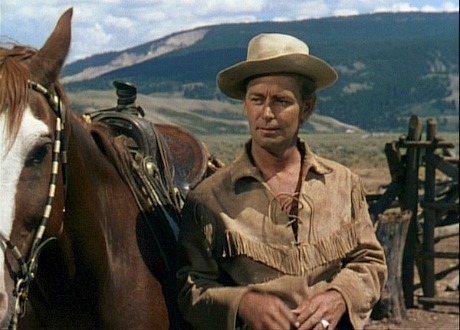
So there you have it — a Shane Bluray from Paramount Home Video is in the pipeline and likely to be issued sometime in 2013 so they can call it a 60th Anniversary edition.
And all of this for reasons having little or nothing to do with my constant bellyaching about the lack of a Shane Bluray.
The scanning of Shane‘s three-strip elements was done eight or nine months ago. I haven’t been told when the combining was done, but it has been done. I’m told that George Stevens, Jr. is involved, and that the film as presently constituted has been shown to a few Paramount Home Video people, and that they’ve spotted some places where the registration is slightly off, etc. It’s a tough job to make all of those George Stevens dissolves look right and well-blended with everything else. But they’re well down the road so no more complaining from this corner.
Lunch With Padilha
Yesterday’s sitdown with Jose Pedilha, director of Elite Squad: The Enemy Within and the forthcoming MGM Robocop remake, was easy and agreeable. Michael Fassbender‘s name didn’t come up as a possible candidate to star as Murphy (i.e., the role played by Peter Weller in the 1985 Paul Verhoeven original), but he did say casting has to be happen by July. The film will be released in 2013, presumably in the summer.
Elite Squad 2 is the official Brazilian entry for the Best Foreign Language Feature Oscar. Last Sunday, or the day after I saw at the Palm Springs Film Festival, I wrote that it should definitely be considered as one of the top Best Foreign Film Oscar nominees because good is good regardless of genre. I said this knowing there’s a prejudice against action-driven films within the Academy’s foreign-language committee. They want their foreign-language nominees to be solemn, heartfelt social-realism dramas with a lot of talking and hugging.
The irony, of course, is that Elite Squad 2 is social realism — it reflects the tensions and conflicts between the Brazilian government, cops and criminal class. And it works in much the same way as any respectable Serpico-like, Sidney Lumet-like urban melodrama made in this country.
Social commentary will also figure in Padila’s Robocop. Verhoeven’s original was a satire of a lot of things (insane corporate greed, “life in the big city,” violent action films) that apply just as much today as they did 25 years ago. “The satire element of RoboCop is, I think, needed today,” he told a Telegraph reporter last month. “That kind of social, aggressive satire I haven’t seen done well in movies lately. And it’s almost like the politics and violence in the world is asking for this: ‘Someone please make some satire now!’ So we’re going to keep that edge.”

